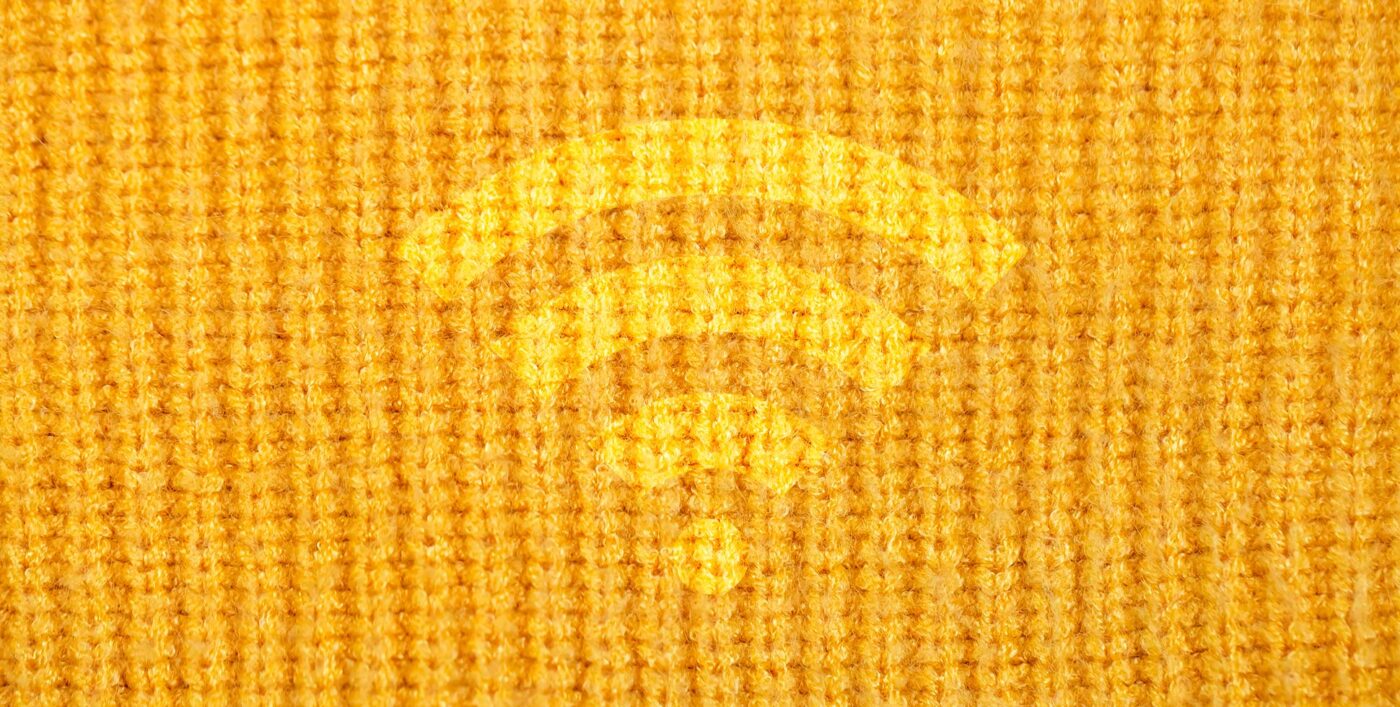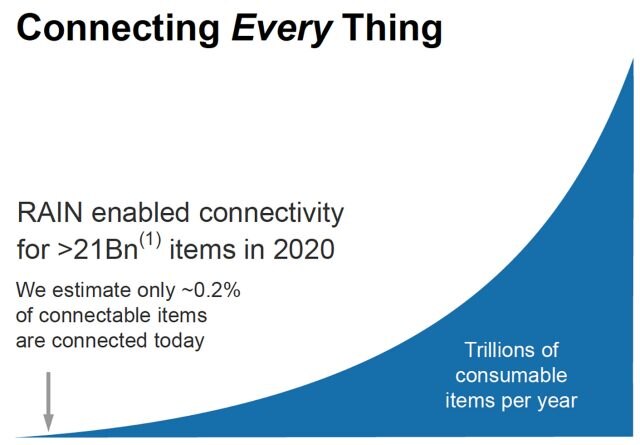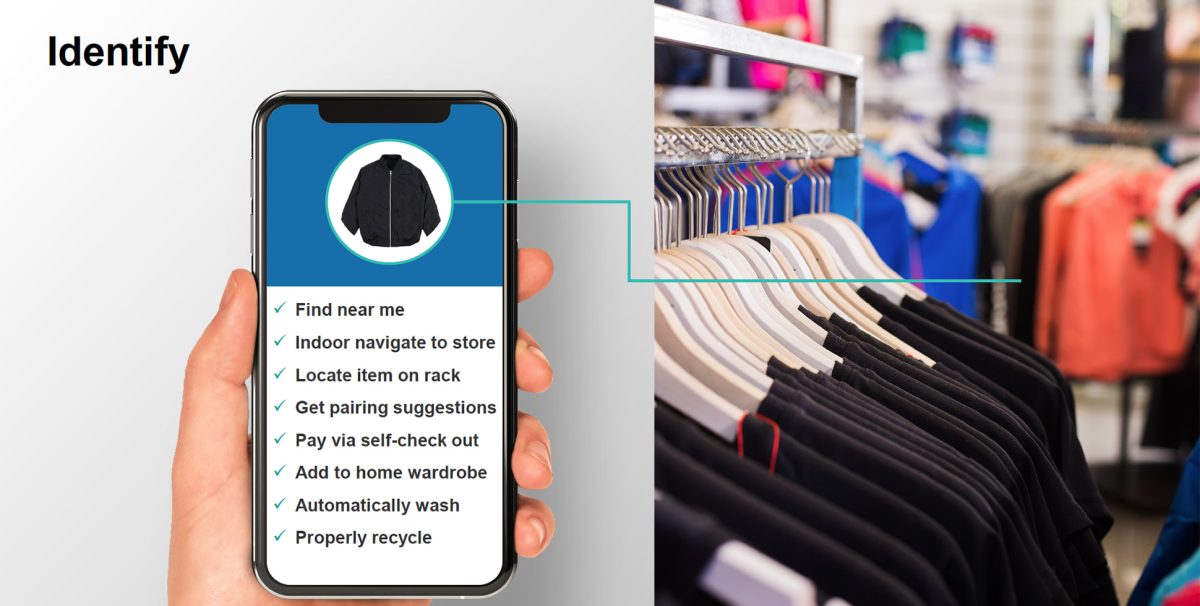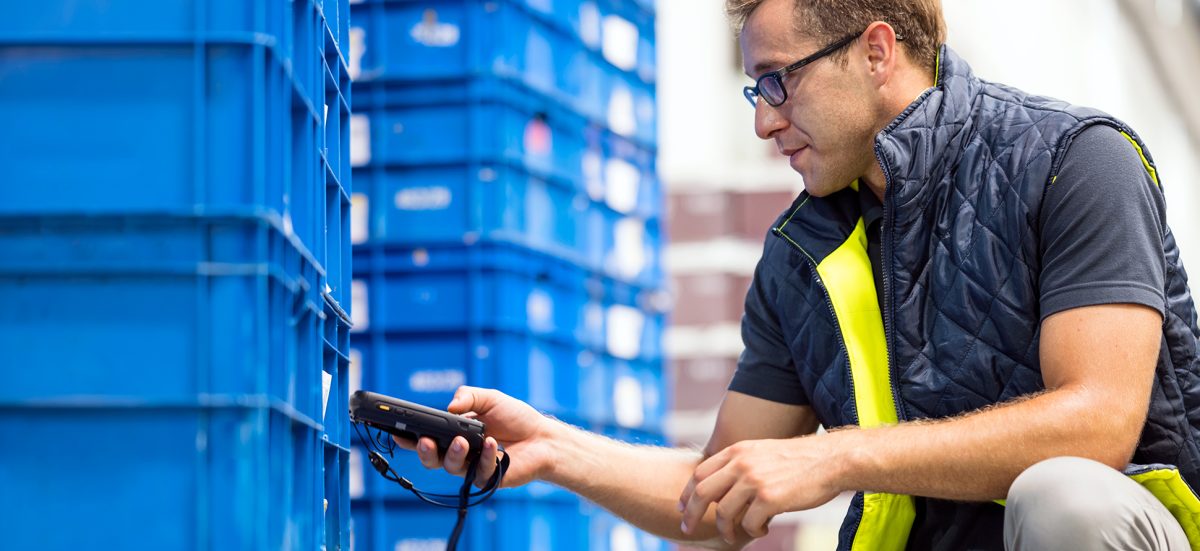The Connected, Intelligent… Sweater

Imagine you’re a retailer, and in that hyper-competitive market, you’re looking for an advantage to transform both your business intelligence (BI) processes and your customers’ experience.
It would be perfect, you muse, if you could not only better track and monitor inventory but also have a new way to engage more meaningfully with your customers in a way that isn’t a static website linked to a QR code. There must be some technology out there to leverage, you think.
Turns out, there is a technology that can do both, and it’s not only revolutionizing retail but poised to transform countless other sectors. RAIN RFID (Radio Frequency Identification) – a new dynamic fabric of the intelligent digital world – enables precise, flexible, inexpensive devices to connect one to many automatically. Increasingly, however, innovators are using RAIN RFID in new ways to transform the way people connect with their things.
Let it RAIN
RAIN RFID uses an open global standard, the GS1 UHF Gen2 protocol, which ISO/IEC has standardized as 18000-63, to connect everyday items to the Internet. It allows innovators to embed low-power wireless intelligence in endpoint products and new embedded-reading capabilities into more than just traditional, stand-alone readers.
In doing so, companies aim to propel industries far beyond decades-old bar-code scanning into a new dynamic world of not just the Internet of Things (IoT) but the Internet of All Things. No longer just a business-to-business use case, embedded reading also creates an entirely new relationship between businesses and consumers, ranging from improved purchase experiences to more advanced consumer marketing and loyalty opportunities.

Smart tags have been a hot topic for many years. More than 29 billion tag ICs were shipped in 2021 with a >30 percent growth rate, according to the RAIN Alliance. Despite these large numbers, the upside is still huge: it’s estimated that just 0.2 percent of connectable items – ranging from auto parts to apparel to pallets, pharmaceuticals, tires, food, and more – are connected today. And while early iterations of RAIN RFID could cost $1.50 per tag, today it’s down to just a few cents.
RAIN RFID can wirelessly scan up to 1,000 items per second, without line-of-sight, from very close range up to 10 meters away. RAIN RFID tags need no batteries and can last indefinitely. RAIN collects accurate, real-time data about tagged items, enabling insights about an item’s identity, location, or authenticity. RAIN’s potential is vast: It will enable connectivity to countless endpoint devices from new read points and in doing so allow us to capture and analyze data we never could before. This will allow businesses to transform their processes and revolutionize their customers’ experiences.
In addition, Arm is pioneering the use of compute within a new class of “smart tags.” Computational Radio Frequency Identification (CRFID) technology involves embedding a very low-power or even battery-less MCU capable of simultaneously managing both wireless power and wireless data, like light or temperature sensors inside a RAIN RFID tag. This would enable the tag to not only capture and store information but act upon it—whether compressing data, analyzing trends, or detecting anomalies.
RAIN RFID: The embedded reader revolution

The other aspect of this transformation is embedded technology that is redefining what readers are and how we use them. Now, Impinj reader chips can be embedded in smart appliances, automobiles, office-security systems, industrial mobile devices, and more. They’re fast, reliable, accurate, and low cost. And can even enable consumer products like a smart doorbell with embedded RAIN RFID reader technology which could alert a consumer that their package has arrived at the door.
And going forward, you can imagine, thanks to Arm IP innovation, greater device integration with energy-efficient cores that will deliver even more functionality to systems. This architectural approach can be utilized in even lower power, small form factor consumer mobile devices including smartphones, wearables and XR headsets.
Today, global adoption across many industries
We know there will be myriad applications that we can’t even imagine. But today, the technology is becoming widespread:
- Aviation: Airlines and airports, including Delta Airlines, are optimizing baggage handling operations, improving passenger experience, and reducing bag mishandling costs.
- Sports and entertainment: From golf balls to rental equipment, organizations are automating more of their operations so staff can focus on what’s important: their customers. TopGolf uses RAIN to track and measure golf drives, delighting customers with new experiences.
- Healthcare: Hospitals, including NHS Trust, are improving care, reducing costs, and increasing efficiency with better management of assets and inventory.
- Automotive: Manufacturers, including Volvo, are changing the way machines and humans work. RAIN can uniquely identify each vehicle and part, reliably tracking it through the production process, ensuring custom orders are built correctly.
- Supply Chain and Logistics: By using RAIN RFID to track packages and other assets, supply chain and logistics companies automate processes and gain valuable insights to help them cut costs and speed up their operations.
- Retail: RAIN solutions enable the digital transformation that helps retailers, including Walmart, to drive sales, streamline operations, and delight customers.
RAIN RFID: The future of retail and consumer experience?
The opportunities for the future are exciting. Imagine you’re a consumer: You’ve identified, online, a lovely sweater, in your size and color and purchased it. Product tracking now includes precise locations of delivery vehicles on a map with far more accurate delivery times – no more “tonight by 8 p.m.” A week after you begin wearing it, a tiny tag, woven into the fabric of your sweater, sends an alert to your smartphone that it’s time to wash the garment. As you approach the washer, the machine comes to life and its control panel suggests a time and water temperature specifically geared to the new sweater because they’re talking to each other. Wirelessly, via RAIN RFID.
As you get ready for dinner out, you cannot find your favorite new sweater. No problem. You open your smartphone and immediately track down the lost item still in the dryer. But then your virtual wardrobe app reminds you that you’ve worn the sweater three times in the past week and suggests a blue cardigan from in your closet to pair with your khaki pants. As you head out the door, you get an alert that snow is in the forecast and suggests you bring along that new parka in your closet.
If you’re the retail brand owner that sold one of these garments, you’ve not only used RAIN RFID to make your supply chain and inventory-management systems much more transparent while reducing operational costs. You’ve also created a heretofore unimaginably tighter connection with your customers by embedding RAIN into your products, delivering automated intelligence and new, delightful experiences outside the store. The consumer is seamlessly connecting with your brand throughout their everyday life. RAIN also has the potential to bolster retailers’ sustainability efforts by supporting clothing-recycling programs.
We are at the early stages of this vision for boundless IoT. Sporting-goods company Decathlon, fast-fashion retailer Zara, and casual wear brand Uniqlo are adding RAIN RFID tags to all their products, engaging consumers with improved omnichannel experience and self-checkout. TopGolf delights players with accurate stats about their golf balls. And the Delta Airlines’ app provides travelers with real-time insight into their bag’s location.
The power of enablement

A confluence of proven technologies, roadmaps, and an ecosystem dedicated to making the world a better place by intelligently connecting everything sits as a foundation for enabling this boundless IoT vision and a vastly more productive and efficient world.
For decades the world has used and understood the importance of bar codes, which tell us today when we can expect that package to be deposited on our doorstep. This will soon become a quaint memory as we embrace the power of RAIN RFID to transform and automate the world around us.
Already enterprises are racing to take advantage of the technology. A recent Accenture report says that just 5 percent of retailers surveyed are not considering deploying RFID. In fact, most retailers (80 percent) said the benefits of RFID cannot be replicated by another technology.
RAIN RFID is the foundation of a future in which not only electronic devices will be connected but everyday, unpowered, items – trillions of them. The technology will give every item a complete digital life – from manufacture to enterprise to consumer to recycle. It has the potential to enable a more efficient and circular economy, help the environment and, in the end, improve lives.
Arm and Impinj are working to accelerate the RAIN RFID vision. We are leading initiatives focused on next-generation embedded readers and tag chips for endpoints, and welcome engagement with brands, device manufacturers, and silicon providers to bring this to fruition.
This blog was written with the help of Will Yuan and Andrew Dunn, Directors of Strategic Business Development at Arm.
Any re-use permitted for informational and non-commercial or personal use only.












